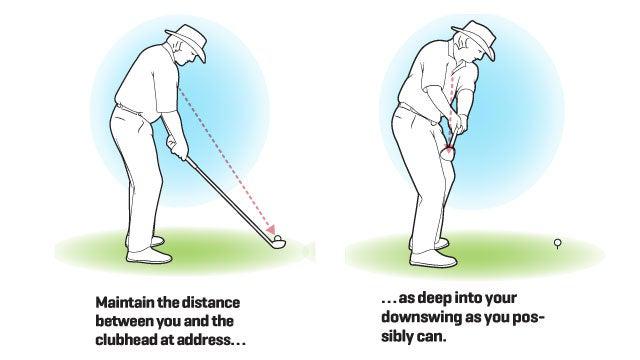As the PGA Tour nears its climax, professional golfers face a critical decision point—whether to maintain a composed and patient demeanor or unleash their aggressive side in pursuit of victory. This pivotal juncture challenges golfers to tread carefully on a path where both caution and audacity can either secure success or lead to failure. Their responses to this dilemma will define the narrative of the season’s finale.
Finding the Right Balance: Patience versus Aggressiveness
As the PGA Tour season winds down, golfers are engaged in a delicate dance between patience and aggression. With the impending FedEx Cup Playoffs on the horizon and limited events remaining, players must strategize meticulously to enhance their chances of triumph.
Patience is traditionally valued on the PGA Tour, particularly during high-stakes major championships. Golfers often opt for a conservative game plan, focusing on error avoidance and staying competitive. However, as the season draws to a close, embracing a more aggressive mindset can prove advantageous. With fewer opportunities to secure spots in the lucrative Playoffs, players may exhibit a willingness to take calculated risks in pursuit of victories.
The manifestation of aggression can vary across different aspects of the game. Players may choose more daring tee shots, aiming for tighter landing areas to set up shorter approaches to the green. They might also lean towards targeting pins on approach shots, even at the expense of higher risks.
The decision between emphasizing patience or aggression hinges on numerous factors, including the player’s current form, course conditions, and the tournament’s competitive landscape. Golfers in peak form with a stellar track record on a specific course are more inclined towards an aggressive style. Conversely, those struggling with performance or facing challenging course conditions may opt for a more cautious strategy.
Adaptive Strategies for Sustaining Performance
In the concluding phase of the PGA Tour season, players encounter a unique challenge of balancing patience and aggressiveness to preserve their top form. While aiming to secure coveted positions in the FedEx Cup playoffs, players must also guard against overexertion and injuries.
Players are adapting their strategies by emphasizing good posture and swing mechanics to prevent injuries and ensure consistent ball-striking. They are honing a patient approach to capitalize on opportune moments for aggressive play.
Moreover, golfers are leveraging advanced technology to elevate their game. Many are engaging swing coaches and utilizing video analysis to identify areas for improvement in their technique. Data analysis is also being employed to make informed decisions on the course, enhancing performance.
By integrating these adjustments, players aspire to sustain their peak performance levels and position themselves for success in the upcoming FedEx Cup playoffs.
Players’ Strategic Focus
- Tiger Woods: Emphasizing patience and accuracy in fairway shots.
- Rory McIlroy: Working on refining swing mechanics and adopting a more assertive gameplay style.
- Jordan Spieth: Utilizing data analysis for strategic decision-making on the course.
- Dustin Johnson: Collaborating with a swing coach to enhance technique and mitigate injury risks.
In the realm of professional golf, mastering the delicate equilibrium between patience and aggression is essential. Each hole and circumstance demand astute judgment from players, considering factors like course layout, weather conditions, and personal strengths and weaknesses.
There are instances where patience and a conservative approach reap rewards. On challenging holes, opting for par over risky plays can be prudent. In adverse weather conditions, exercising patience and waiting for the right moment to strike can be a strategic advantage.
Conversely, there are times when a bold and aggressive approach is the key to success. Players must calibrate their strategies meticulously to navigate the complexities of the game and emerge victorious in the competitive landscape of professional golf.
As the PGA Tour season approaches its culmination, professional golfers are navigating a fine line between patient precision and daring aggression. Confronted with challenging courses and escalating pressure, players must make calculated decisions on each shot to enhance their chances of a strong finish. Balancing strategic gameplay with assertive swings, they encounter the critical task of optimizing their performance while seizing opportunities to climb the leaderboard.
Mastering the Balance: A Tour of Patience and Aggression
As the PGA Tour season reaches its climax, golfers are tasked with striking a delicate equilibrium between patience and aggression on the course. With only a few events left before the onset of the FedEx Cup Playoffs, players must strategically consider their tactics to maximize their chances of success.
Patience traditionally holds sway on the PGA Tour, notably during the rigorous major championships. Players often adopt a cautious approach, prioritizing error avoidance and consistent performance to remain competitive. However, as the season progresses, a shift towards a more aggressive mindset may prove advantageous. With dwindling opportunities to secure places in the lucrative Playoffs, players may be inclined to take calculated risks in pursuit of victories.
Aggressiveness can manifest in various forms, from opting for bold tee shots aiming for tighter landing areas to targeting pins on approach shots for more favorable positioning. Ultimately, success lies in the ability to adapt to changing circumstances and make timely decisions. Elite players exhibit a blend of patience and calculated risk-taking, knowing when to wait and when to seize opportunities.
Insights from the Pros
Top players on the PGA Tour have honed the art of balancing patience and aggression to achieve peak performance. Let’s look at a few exemplars:
- Tiger Woods: Known for his aggressive play, Tiger also showcases patience, as demonstrated by his poised par that secured a tournament victory.
- Rory McIlroy: A skilled aggressive player who adeptly manages his emotions and strategically chooses when to go for aggressive shots.
- Brooks Koepka: Recognized for his powerful drives, Koepka understands the importance of strategic decision-making, balancing aggression with prudent course management.
Adapting Strategies to Course Challenges: A Path to Success in the Final Stretch
In the concluding phase of the PGA Tour season, players are challenged to blend patience with aggression on courses designed to push their skills to the limit. The PGA Championship, renowned for its demanding course conditions, necessitates players to adapt their strategies dynamically to tackle the evolving challenges.
Factors like wind and rough play pivotal roles in the players’ strategies. Adapting club selection and swing techniques to suit varying wind conditions, staying focused, and demonstrating patience are crucial elements in navigating the tournament’s diverse landscape. Maneuvering through thick rough, mastering green reading, and executing precise putting strokes are essential skills for success on the championship course.
The PGA Championship stands as one of the most arduous challenges on the professional golf circuit. Players who can adeptly adapt to changing conditions, exercise control in their shots, and make strategic decisions are poised for victory in this prestigious tournament.
In the quest for success as the PGA Tour season concludes, players must maintain a delicate balance between patience and aggression. This equilibrium is pivotal for achieving strong finishes, positioning themselves for the FedEx Cup playoffs. While some players excel in finding this balance, others grapple with the strategic mix, influencing their season’s outcomes. As the season progresses, the ability to strike the right balance between these contrasting elements will be instrumental in determining players’ success on the course.





